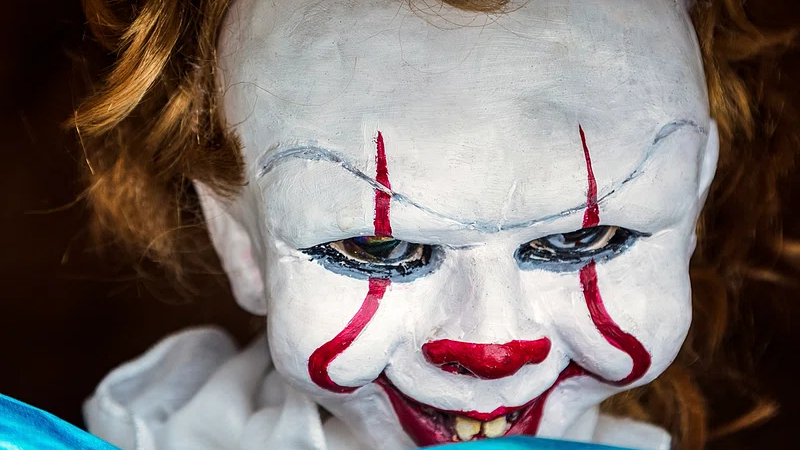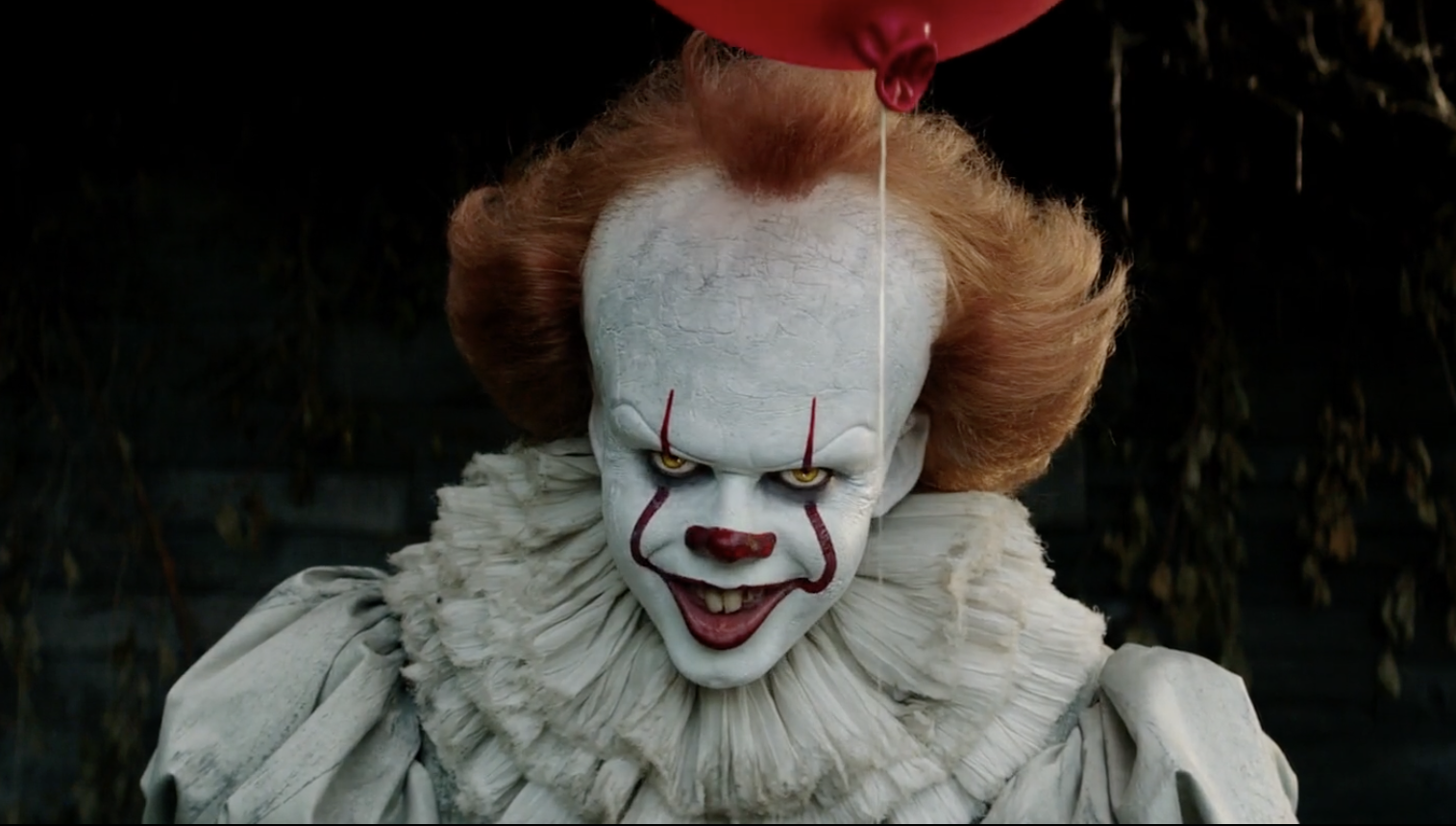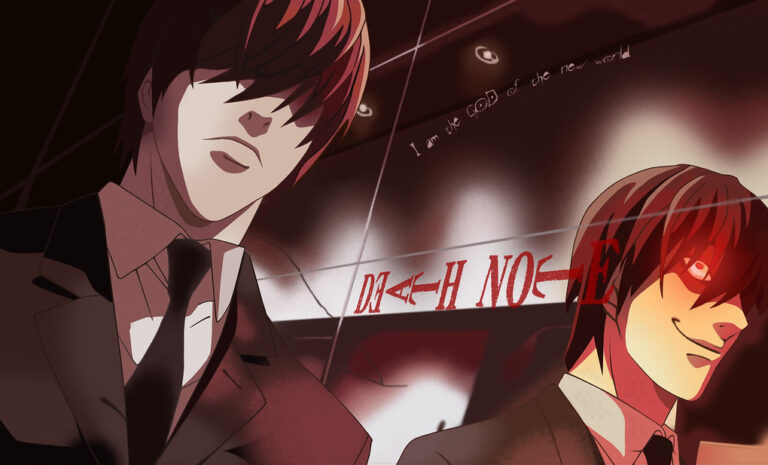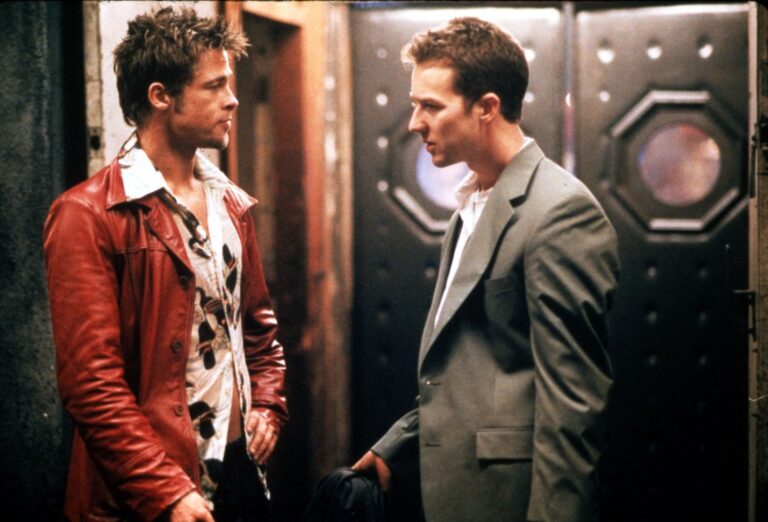How Did the Clown “IT” Affect Children?
Pennywise the clown has become a figure etched in the minds of many, especially among children who were traumatized by his terrifying presence. Known for his signature red balloons, the creature from Stephen King’s novel “IT” has caused fear and unease for generations, leading to a phenomenon of clown phobia among youngsters. In this article, I will explore how this infamous clown has affected children’s psychology and its impact on popular culture. Based on the author’s perspective, I will delve into the psychological aspects of this phenomenon and its lasting effects on those who have encountered the infamous “IT”.
Pennywise Instilled Fear in a Generation

When we think of the impact of the malevolent clown Pennywise, one cannot help but be reminded of the profound terror it instilled in an entire generation, a fear that continues to linger in the collective consciousness. The portrayal of Pennywise, with its hauntingly macabre appearance and its ability to tap into the deepest fears of children, has left a mark on popular culture, shaping the way many people perceive clowns and the concept of fear itself.
Stephen King’s “IT” was a pivotal work in shaping the narrative of horror, and the character of Pennywise played a significant role in this. The mere mention of Pennywise evokes a sense of unease, a testament to the enduring impact the malevolent clown has had on those who encountered the nightmarish tale. The narrative of “IT” delves into the vulnerability of children and the pervasive nature of fear, which are aspects that struck a chord with readers and viewers alike, heightening the psychological impact of Pennywise and the story as a whole.
The sinister and uncanny nature of Pennywise, coupled with its ability to exploit the deep-seated fears of its young targets, has resulted in a lasting impression that transcends the confines of fiction. The representation of Pennywise, as depicted in the novel and its various adaptations, has undeniably contributed to a widespread fear of clowns and left an imprint on the psyches of many.
Related: Interested in psychology? You may want to learn more about the science of mind and behavior.
The trauma induced by the presence of Pennywise in the story, and its ability to prey on the vulnerabilities of children, has perpetuated a lasting legacy of fear over the years, shaping the perceptions of an entire generation and leaving an enduring mark on the cultural landscape.
It is evident that the impact of Pennywise extends far beyond the realms of fiction, seeping into the collective psyche and, in many ways, altering the perception of what is truly fear-inducing, particularly for impressionable young minds.
Generations Trembling
The imagery and character of Pennywise have woven themselves into the fabric of popular culture, particularly in the portrayal of clowns as harbingers of fear, rather than the traditional symbols of joy and laughter. The mere sight of a red balloon, a subtle but potent symbol associated with Pennywise, is enough to evoke a sense of apprehension in those familiar with the malevolent entity. The enduring impact of Pennywise has, without a doubt, contributed to a widespread fear of clowns, particularly among those who were exposed to the story in their formative years.

The very essence of Pennywise’s portrayal has permeated the collective consciousness, and even the mention of the malevolent clown triggers a response rooted in fear and apprehension. This enduring legacy serves as a poignant reminder of the profound impact a fictional character can have on the psychological landscape of a generation.
The resonance of Pennywise as a symbol of terror underscores the depth of its impact on the cultural psyche, a phenomenon that speaks to the masterful construction of the character and its ability to leave an indelible mark on the minds of those who have encountered the story.
The portrayal of Pennywise in Stephen King’s novel and its various on-screen adaptations has undeniably left a lasting impression, one that has transcended the confines of the horror genre and embedded itself in the annals of popular culture, solidifying Pennywise’s status as an iconic embodiment of fear itself.
It is through this lens that we can truly appreciate the profound and enduring impact that Pennywise, the malevolent force at the heart of “IT,” has had on successive generations, shaping perceptions and leaving an indelible mark on the cultural psyche.
The Terrifying Makeup and Appearance

The visage of Pennywise, with its grotesque and menacing makeup, has been etched into the collective psyche, representing a symbol of irrational fear for many. The deliberate and exaggerated features of the clown, crafted to evoke discomfort and dread, have become an enduring emblem of horror, provoking profound unease in those who have been exposed to its chilling countenance.
The deliberate curation of Pennywise’s appearance, from the pallid complexion to the malevolent glint in its eyes, serves as a testament to the meticulous construction of a character designed to elicit fear and unease. This careful attention to detail in the creation of the malevolent clown’s appearance has contributed to its status as a paragon of terror, leaving an indelible mark on the minds of those who have borne witness to its visage.
The haunting countenance of Pennywise, carefully crafted to capitalize on the most primal fears, has left an indelible impression on those who have peered into the face of terror. The mere image of Pennywise, with its bloodcurdling visage and the promise of unyielding malevolence, lingers in the recesses of the mind, a testament to the enduring impact of its calculated and terrifying appearance.
The deliberate construction of Pennywise’s appearance, specifically tailored to engender a sense of unease and trepidation, has paved the way for the malevolent clown to seep into the collective consciousness, perpetuating a legacy of fear that continues to resonate with successive generations.
The lasting impact of Pennywise’s appearance serves as a reminder of the enduring power of fear and the profound psychological effects of encountering such a meticulously crafted embodiment of terror.
The Creature from Stephen King’s Novel
Stephen King’s “IT” introduced readers to a nightmarish entity, Pennywise the Dancing Clown, a force that preyed upon the fears and vulnerabilities of children. The very essence of Pennywise, as depicted in the novel, is one that strikes at the core of primordial fears, permeating the psyche with an unrelenting sense of dread and trepidation.

The portrayal of Pennywise in the pages of King’s novel is one that transcends the conventions of horror, delving into the depths of the human psyche and unearthing a primal fear that resonates with readers on a visceral level. The character of Pennywise, with its disquieting ability to shape-shift and assume the form of one’s deepest fears, embodies a malevolence that leaves an indelible mark on the reader, perpetuating a lasting sense of unease and apprehension.
The narrative mastery demonstrated in King’s depiction of Pennywise, and the harrowing impact of the malevolent entity, underscores the enduring legacy of fear instilled by the novel. The insidious presence of Pennywise, woven into the very fabric of the story, serves as a haunting reminder of the lasting psychological impact it has had on those who have ventured into the chilling world of Derry, perpetuating a sense of unease that extends far beyond the confines of the narrative itself.
The enduring resonance of Pennywise, as brought to life by Stephen King’s masterful prose, serves as a testament to the profound and lasting impact the malevolent entity has had on the cultural and psychological landscape, solidifying its status as an iconic symbol of fear and terror.
Gacy: The Killer Clown Who Inspired “IT”
The malevolent legacy of Pennywise, the haunting clown at the heart of Stephen King’s novel “IT,” is inextricably linked to the real-life horrors perpetuated by John Wayne Gacy, infamously known as the “Killer Clown.”
Gacy’s heinous crimes and the pervasive sense of terror he instilled served as a harrowing inspiration for the creation of Pennywise, perpetuating a legacy of fear that transcends the boundaries of fiction.

The chilling persona of Gacy, whose malevolent façade concealed unimaginable horrors, left an indelible mark on the public consciousness, etching itself into the annals of true crime and perpetuating a genuine sense of terror and revulsion. The parallels between Gacy and the fictional entity of Pennywise underscore the profound and lasting impact of real-life malevolence on the creation of an enduring symbol of fear in popular culture.
The calculated and malevolent actions of Gacy, which sent shockwaves of fear and revulsion through the community, served as a haunting precursor to the enduring reign of terror established by Pennywise. The resonance of Gacy’s malevolence in the creation of Pennywise serves as a stark reminder of the lasting impact of real-life horrors in shaping the landscape of fear and perpetuating a sense of unease that extends beyond the confines of fiction.
The spectral presence of Gacy, with his nefarious legacy of terror and the harrowing impact of his crimes, stands as a chilling testament to the enduring power of fear, both in reality and in the realm of fiction, embodying a malevolence that continues to reverberate through the cultural and psychological consciousness.
The Horrific Crimes of Gacy

The abhorrent and unfathomable atrocities perpetrated by John Wayne Gacy, known infamously as the “Killer Clown,” elicited a visceral and pervasive sense of fear and revulsion that reverberated through the community, leaving an indelible mark on the public consciousness. The calculated and heinous nature of Gacy’s crimes, which bore the hallmark of premeditated malevolence and the exploitation of trust, perpetuated a legacy of fear and apprehension that lingers to this day.
The chilling specter of Gacy, who operated under the guise of a benevolent and jovial clown, served as a paragon of deception and malevolence, leaving a trail of terror and revulsion in his wake. The pervasive impact of Gacy’s crimes, and the enduring sense of fear and distrust they instilled, stand as a stark reminder of the profound and lasting impact of real-life horror on the cultural and psychological landscape.
The legacy of fear and revulsion perpetuated by Gacy’s calculated and malevolent actions serves as a chilling testament to the enduring power of true terror, a manifestation that has left an indelible mark on the collective consciousness, perpetuating a sense of unease and apprehension that transcends the passage of time.
The malevolent reign of terror perpetrated by Gacy stands as a grim reminder of the enduring and pervasive nature of fear, underscoring the profound impact of his heinous crimes on the cultural and psychological perception of malevolence and the enduring legacy of horror they have left in their wake.
The Miniseries that Marked Young Actors
The 1990 miniseries adaptation of Stephen King’s “IT” not only left an indelible mark on the horror genre but also played a pivotal role in shaping the trajectory of its young cast members, launching their careers and cementing their places in the cultural consciousness. The chilling and evocative portrayal of Pennywise in the miniseries, brought to life with haunting precision, served as a formative experience for the ensemble cast, engendering a lasting impact that is palpable to this day.
The transformative and often harrowing experience of bringing the nightmarish tale of “IT” to the small screen left an enduring mark on the young actors, shaping their artistic sensibilities and leaving an indelible imprint on their professional trajectories. The cultural resonance of the miniseries, which harnessed the lingering fear and unease associated with Pennywise, served as a launchpad for the careers of its young ensemble, solidifying their places in the pantheon of horror and establishing a lasting legacy that endures to this day.
The enduring impact of the miniseries on its young cast members serves as a testament to the profound and formative nature of their experience, underscoring the enduring legacy of “IT” in shaping not only the horror genre but also the careers of those who brought the malevolent tale to life on the screen.
The palpable and lasting impact of the miniseries on its ensemble cast members, who were tasked with embodying the pervasive fear and unease associated with Pennywise, stands as a testament to the enduring influence of the malevolent entity and the cultural resonance it has maintained throughout the years.
Pennywise Reappears Every 27 Years
The unnerving and enigmatic entity of Pennywise, with its cyclical reappearance every 27 years, serves as a haunting reminder of the enduring impact the malevolent force has had on successive generations. The pervasive and recurring nature of Pennywise’s return stands as a chilling testament to the lasting legacy of fear instilled by the malevolent entity, perpetuating a sense of unease and trepidation that spans decades.
The cyclical return of Pennywise, with its unyielding malevolence and the enduring impact it has had on those who encounter it, serves as a potent manifestation of the profound and lasting resonance of the malevolent force, perpetuating a legacy of fear and unease that transcends the passage of time.
The cyclical nature of Pennywise’s reappearance serves as a poignant reminder of the enduring and pervasive impact the malevolent entity has had on the cultural and psychological landscape, perpetuating a lasting legacy of fear and apprehension that reverberates through the annals of time.
The cyclical return of Pennywise, with its unrelenting malevolence and the profound impact it has had on successive generations, underscores the enduring and pervasive nature of fear, perpetuating a lasting legacy of unease and trepidation that continues to resonate with those who have borne witness to the malevolent entity.
The Return of the Clown to Reignite Terror
The cyclical resurgence of Pennywise, with each reappearance heralding a resurgence of fear and unease, serves as a haunting reminder of the enduring and pervasive impact the malevolent entity has had on successive generations. The return of the malevolent force, with its calculated and unyielding malevolence, perpetuates a lasting legacy of fear and trepidation, enveloping those who encounter it in a shroud of unease that endures over the passage of time.
The spectral return of Pennywise, with its insidious and unyielding presence, serves as a grim testament to the enduring and deep-seated impact the malevolent entity has had on the cultural and psychological consciousness, perpetuating a lasting legacy of fear and apprehension that reverberates through the annals of time.

The recurrence of Pennywise, with its unrelenting and pervasive malevolence, underscores the enduring impact the malevolent entity has had on successive generations, perpetuating a legacy of fear and unease that stands as a chilling reminder of the enduring power of terror in the cultural and psychological landscape.
The cyclical return of Pennywise, with each recurrence rekindling a sense of fear and apprehension, serves as a poignant reminder of the enduring and profound impact the malevolent force has had on the collective psyche, perpetuating a lasting legacy of unease and trepidation that continues to resonate through the passage of time.
The Profound Psychological Trauma in Children
The enduring and profound impact of Pennywise, the malevolent force at the heart of “IT,” on the psychological well-being of children cannot be overstated. The calculated and unyielding malevolence of the malevolent clown, which preys on the vulnerabilities and fears of its young targets, has perpetuated a lasting legacy of fear and apprehension, ingraining a profound sense of unease in the minds of those who have encountered the nightmarish entity.
The insidious and unrelenting presence of Pennywise, with its ability to exploit the deepest fears and vulnerabilities of children, has left an indelible mark on the psychological landscape of many young individuals, perpetuating a lasting legacy of unease and trepidation that seeps into the recesses of their subconscious minds.

The indelible impact of Pennywise on the psychological well-being of children serves as a chilling testament to the enduring power of fear and the profound and lasting impact it can have on impressionable young minds. The pervasiveness of the malevolent entity’s reign of terror, and its ability to sow the seeds of unease in the minds of children, stands as a haunting reminder of the enduring and deep-seated impact it has had on successive generations.
The enduring and profound impact of Pennywise on the psychological well-being of children serves as a sobering reminder of the enduring power of fear and the indelible imprint it leaves on the impressionable minds of the young. The insidious and unrelenting malevolence of the malevolent entity has perpetuated a lasting legacy of unease and trepidation, manifesting in the form of profound psychological trauma that lingers in the collective subconscious of those who have borne witness to its nightmarish presence.
The Red Balloons as a Disquieting Symbol
The ominous and disquieting presence of the red balloons, inexorably linked to the malevolent entity of Pennywise, has served as a potent and enduring symbol of unease and apprehension. The recurrence of the red balloons, with their ominous and foreboding connotations, serves as a haunting reminder of the enduring impact the malevolent force has had on the psychological landscape, perpetuating a lasting legacy of fear and unease that continues to reverberate through successive generations.

The foreboding and enduring presence of the red balloons, which signal the impending and calculated presence of Pennywise, serve as a chilling and potent manifestation of the enduring and unrelenting malevolence the malevolent entity embodies.
The recurrence of the red balloons, ingrained with their disquieting and pervasive symbolism, stands as a testament to the enduring and profound impact the malevolent force has had on those who have encountered its haunting and disconcerting presence.
The recurrence of the red balloons, with their inextricable link to the pervasive and calculated malevolence of Pennywise, stands as a lasting and disquieting manifestation of the enduring and unrelenting fear the malevolent entity has instilled in successive generations. The presence of the red balloons serves as a potent and ominous symbol of the enduring and profound impact Pennywise has had on the collective consciousness, perpetuating a lasting legacy of unease and trepidation that lingers in the subconscious of those who have borne witness to its chilling and disconcerting presence.
The disconcerting and pervasive symbolism of the red balloons, which serve as a haunting harbinger of the calculated and unyielding malevolence personified by Pennywise, stands as a chilling and potent testament to the enduring impact the malevolent entity has had on the psychological landscape. The enduring presence of the red balloons serves as a lasting and poignant reminder of the lasting and profound unease Pennywise has instilled in successive generations, perpetuating a legacy of fear and trepidation that endures over the passage of time.
Conclusion of “IT” the clown
Clowns have long been a source of fear and fascination for people, especially children. But the character of Pennywise in Stephen King’s novel “IT” took that fear to a whole new level. With its creepy clown makeup and eerie presence, Pennywise struck terror into the hearts of many children and left a lasting impact on pop culture. The repeated question of “how did IT affect children” raises important discussions about the psychological impact of horror and the power of storytelling. It also reminds us of the real-life horrors of people like John Wayne Gacy, known as the “killer clown,” and the importance of addressing and preventing childhood trauma.






